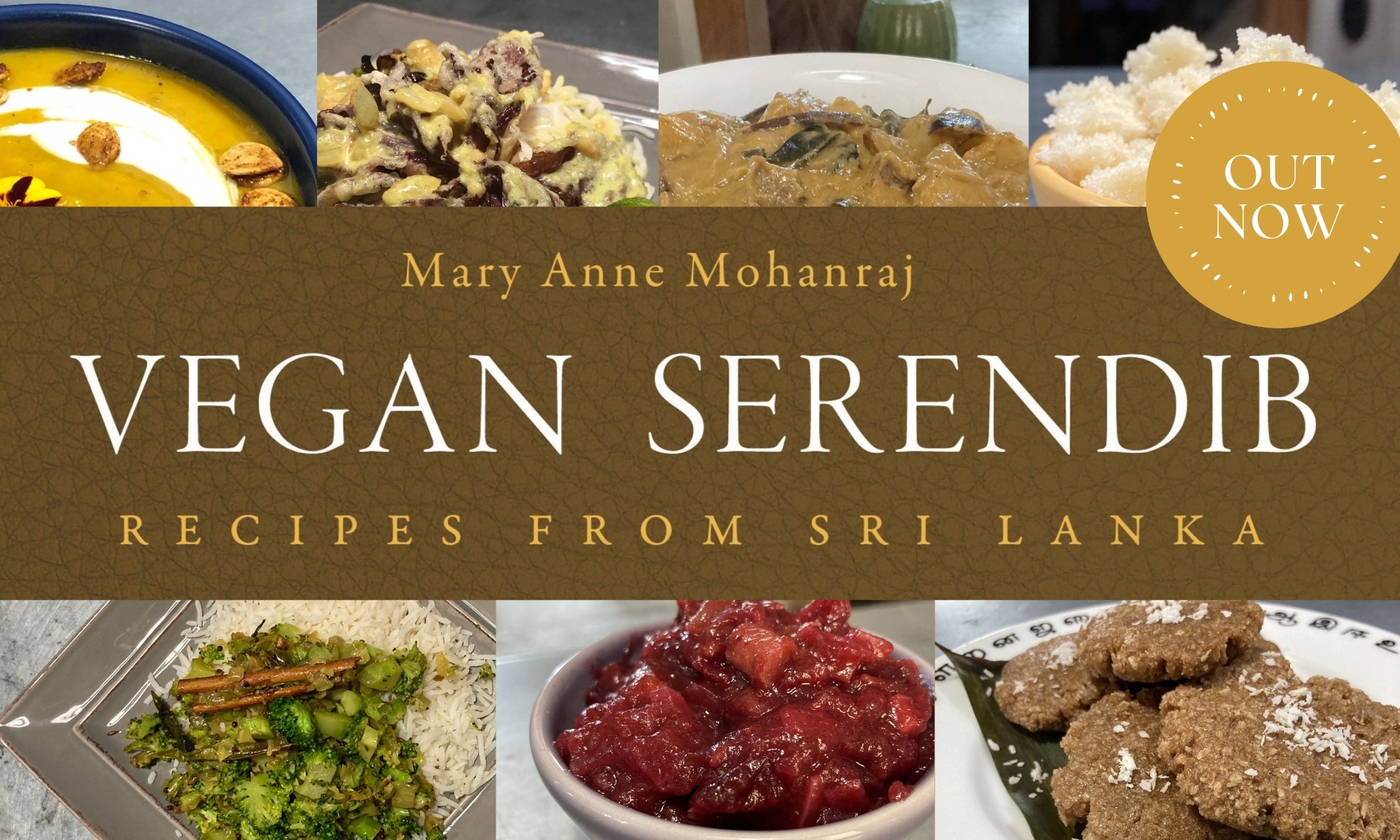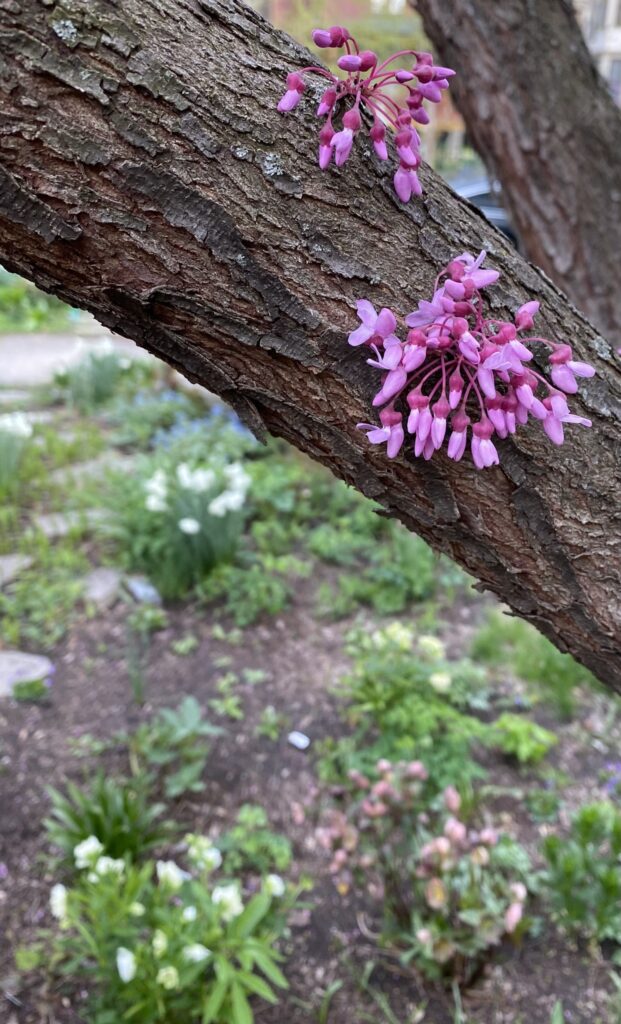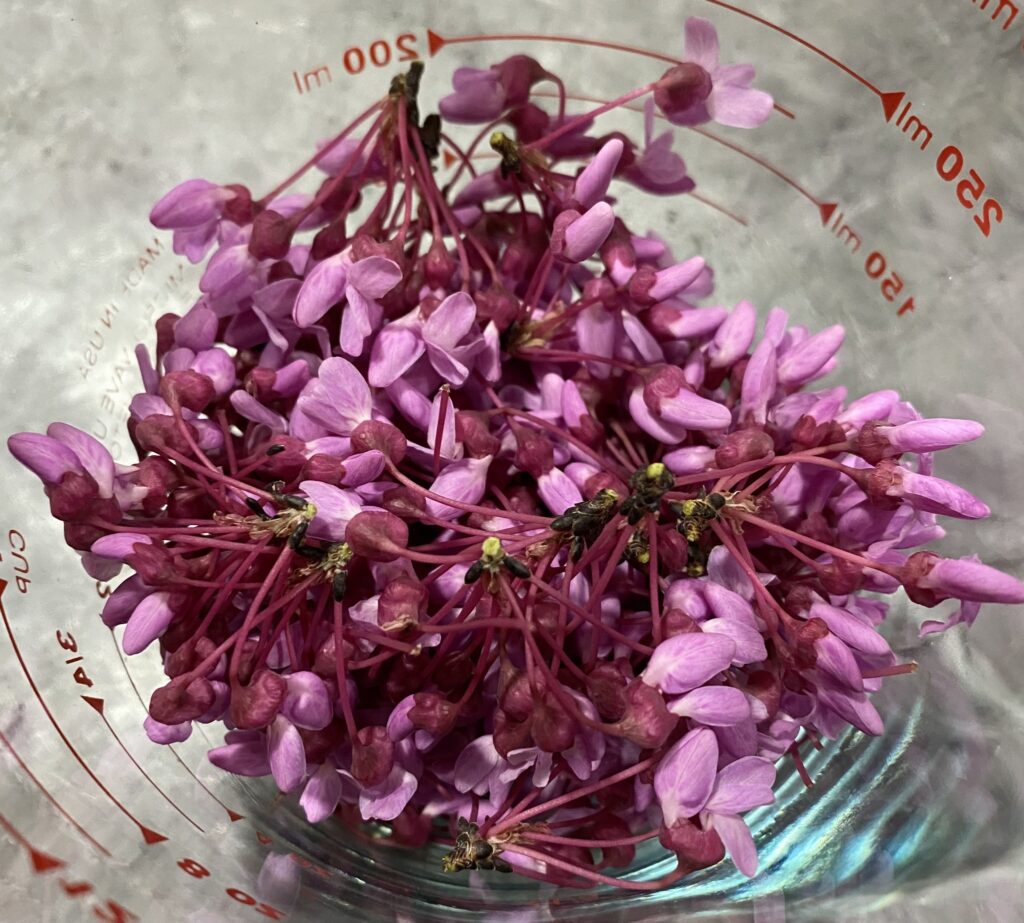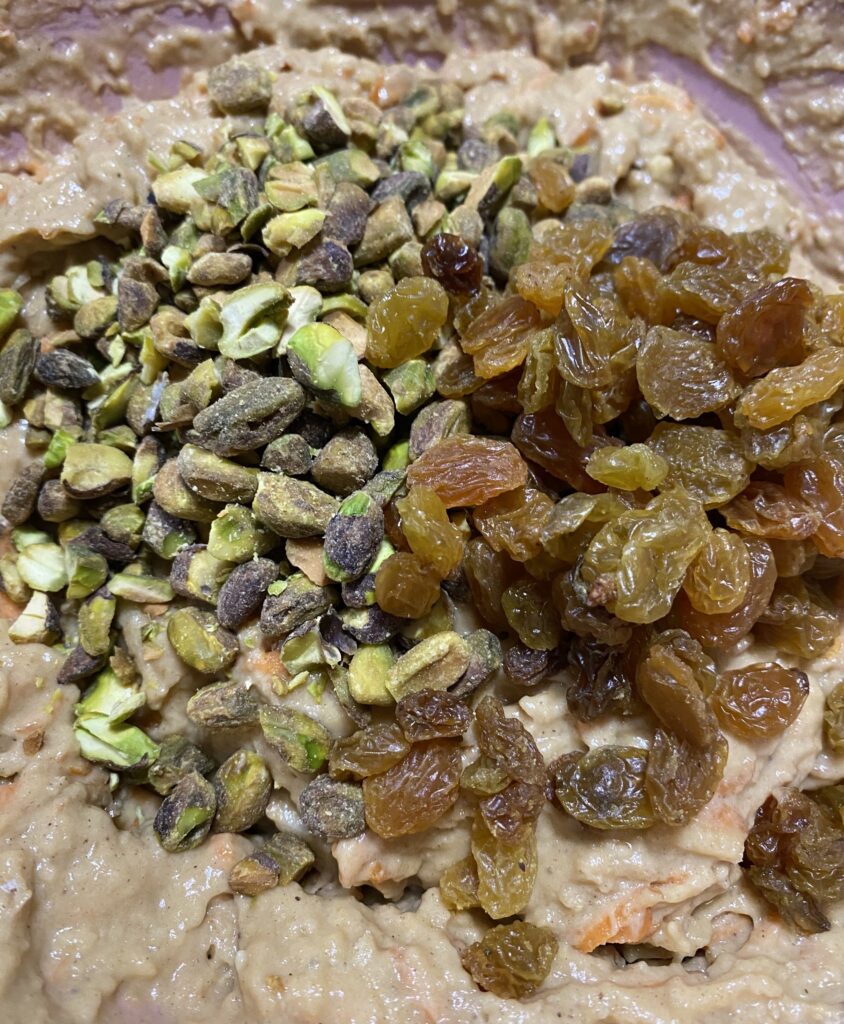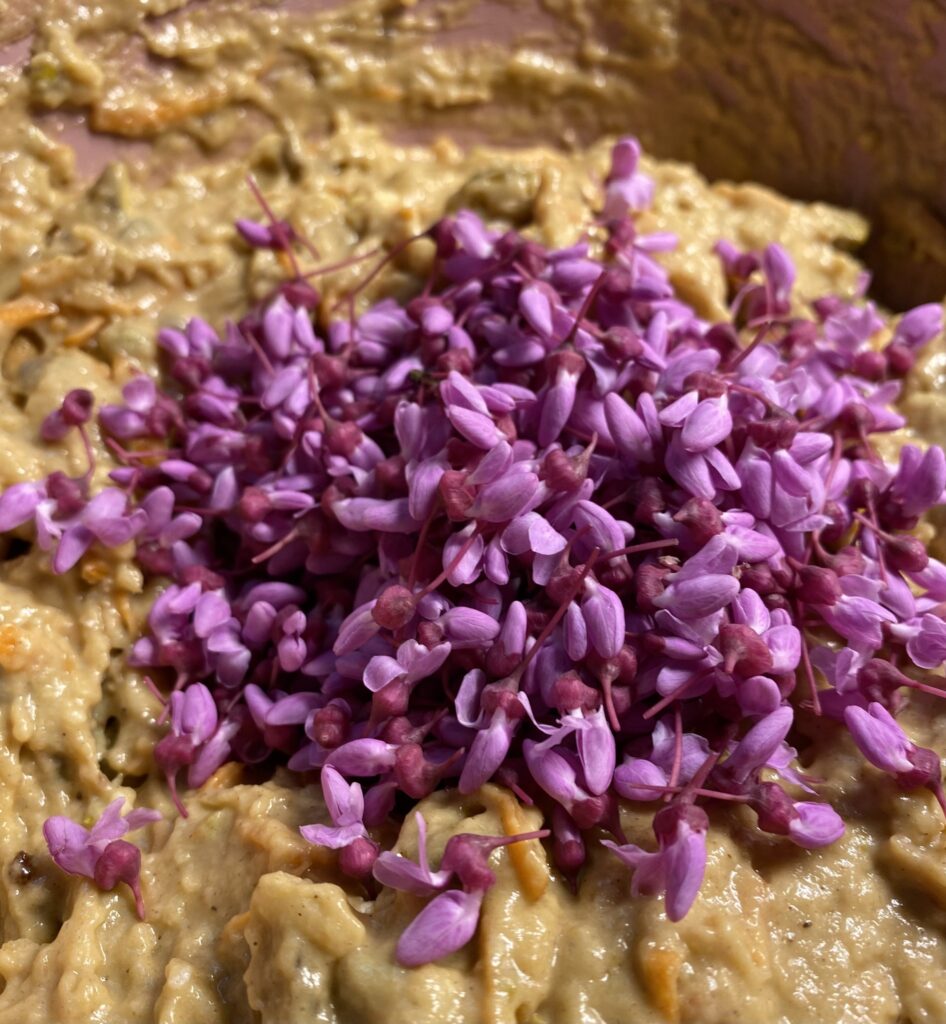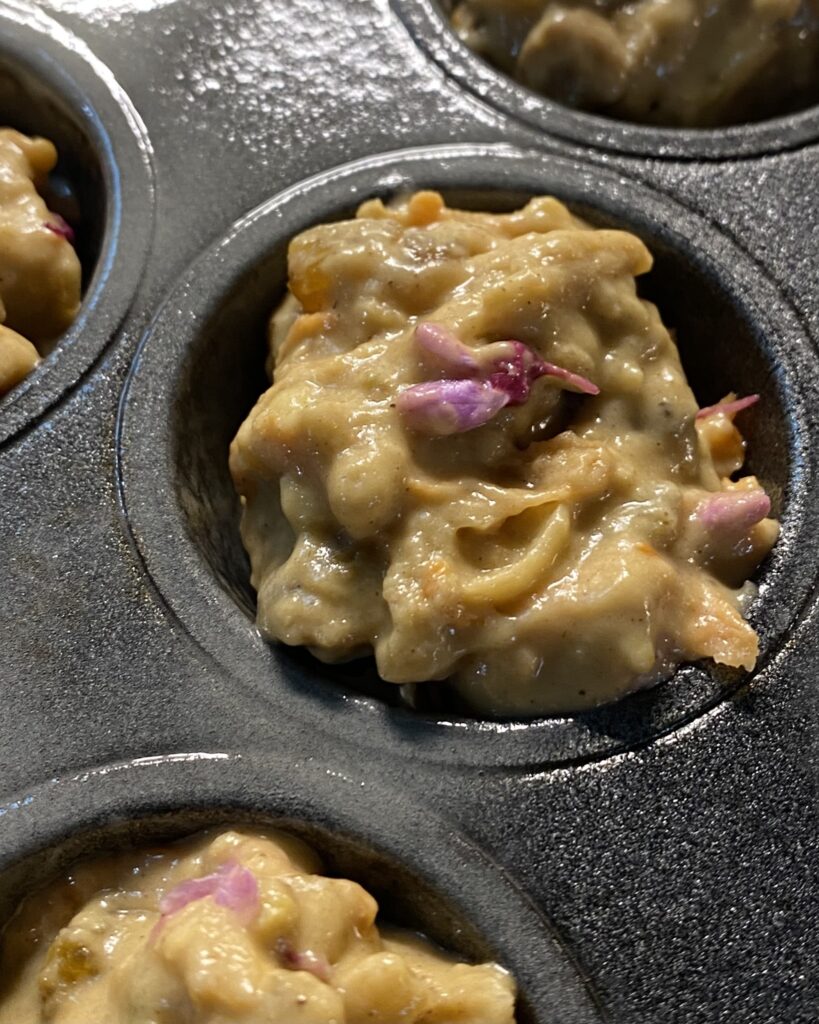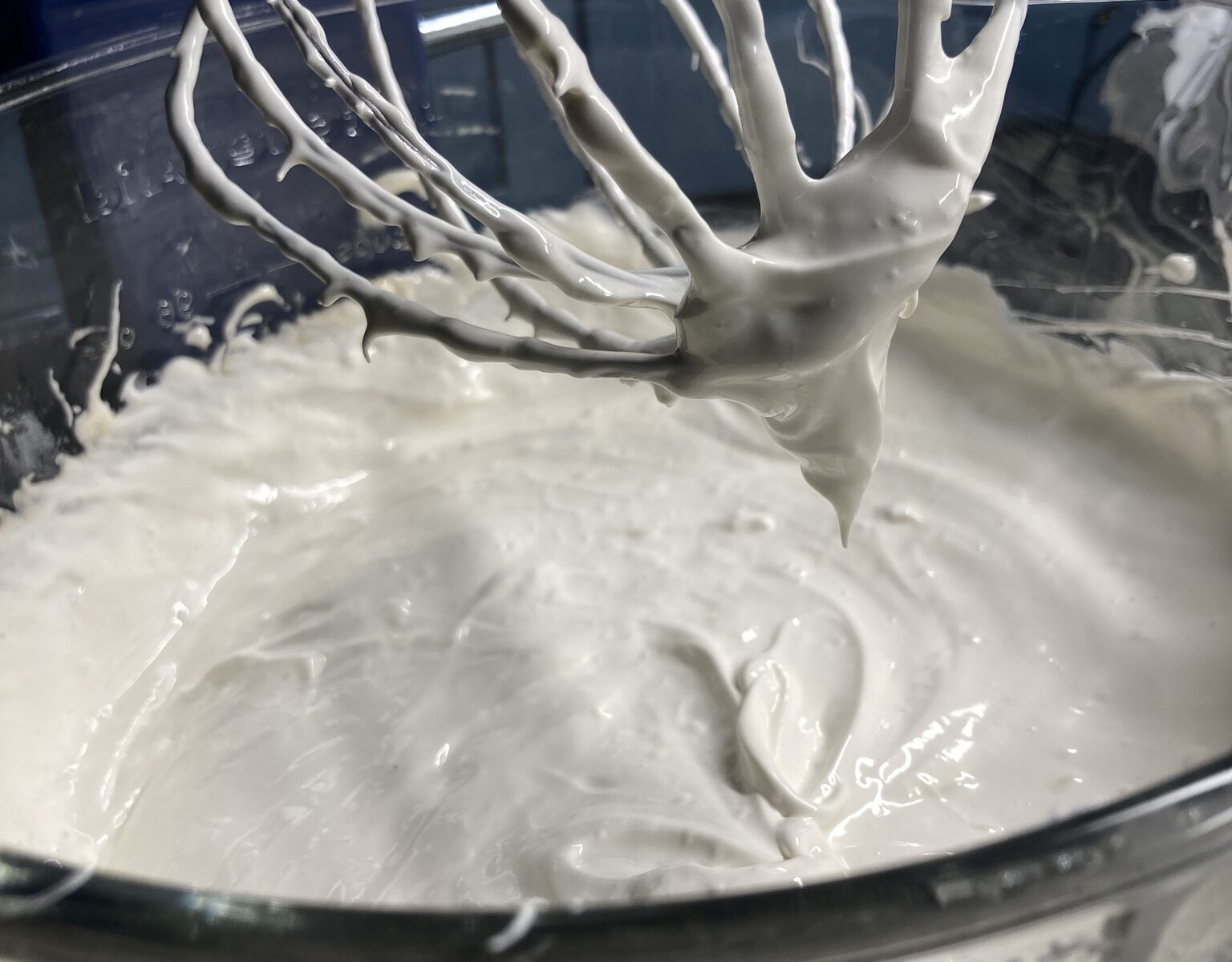(makes 24 muffins, or 48 mini muffins)
You can skip the redbud blossoms in this riff on classic morning glory muffins, and it’ll still be delicious. But they do add a lovely note — redbud blossoms taste a little like fresh peas, sweetly vegetal, which you’d think might be an odd thing to put in a muffin, but combined with carrot and apple and pistachio and sultana and spices, trust me — it’s delicious.
I tried three options for incorporating the redbud blossoms — you can just stir them in, you can sprinkle some on top with the sugar and bake, or you can make a lime glaze to add after the muffins are baked and cooled, and then sprinkle some on top.
For a fancy tea party, I’d go with the last option, just because it’s so pretty, and the lime is a nice contrasting note. For my kids’ weekly muffins that they grab as they’re running out the door, options one and two work great!
Ingredients:
1/2 c. jaggery or dark brown sugar
1/4 c. honey
3 eggs
1/2 cup yogurt
1/2 cup milk
6 T butter, melted
1 t. vanilla extract
2 c. shredded carrots
1 c. shredded / grated apple (about 1 large)
2 c. flour
1 1/2 t. baking powder
1 1/2 t. cinnamon
1/2 t. ground ginger
1/4 t. ground cloves
3/4 t. salt
1/2 c. sultanas (golden raisins)
1/2 c. chopped roasted pistachios
1 c. redbud blossoms, stems removed
nonstick baking spray
sugar for sprinkling, or lime glaze
lime glaze (optional):
1 1/2 c. powdered sugar
1 T. lime juice
1 t. vanilla
2-3 T milk
Directions:
1. Preheat oven to 350F. Combine sugar, honey, eggs, yogurt, milk, melted butter, and vanilla extract, beating until well blended.
2. Add carrots and apple and mix well.
3. In a separate large bowl, combine flour, baking powder, cinnamon, ground ginger, ground cloves, and salt.
4. Pour wet ingredients into dry ingredients, stir a few times to combine, then add sultanas and pistachios. Fold together until just combined.
5. Fold in redbud blossoms (reserving 1/4 c. for sprinkling if desired).
6. Spray muffin pan with nonstick spray, and distribute the batter into muffin cups, filling approximately 3/4 of the way for full-size muffins, or filling completely for mini muffins.
7. Sprinkle top of muffins lightly with sugar. Sprinkle with redbud blossoms, if desired (will be faded, but visible).
8. Bake for 35 minutes (or 13-15 minutes for mini muffins), until testing tooth pick comes out clean.
9. Cool for at least 10 minutes; cool completely if glazing.
10. If using, make glaze — combine glaze ingredients, and drizzle over cooled muffins. Sprinkle with reserved redbud blossoms, and let set before serving.
